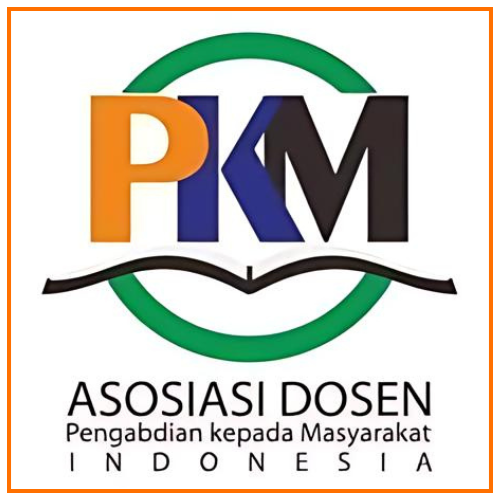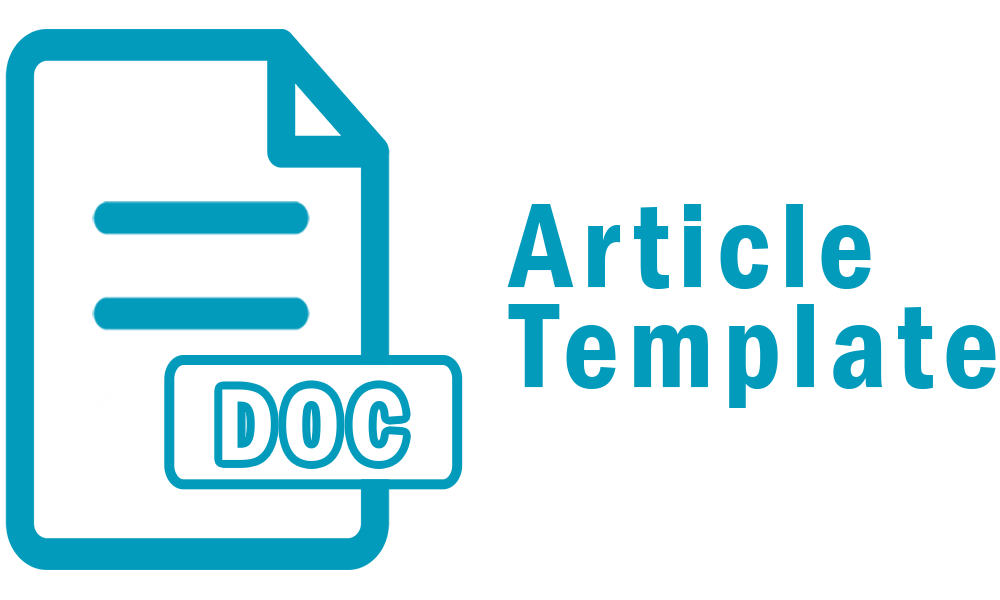Interactive Learning Using E-Learning Module in Learning English for Senior High School: A Review of Related Articles
Abstract
Keywords: E-learning; Interactive Learning Module; Multimedia; Motivation; and Generation 4.0.
Full Text:
PDFReferences
Apriani, E., Arsyad, S., Syafryadin, S., Supardan, D., Gusmuliana, P., & Santiana, S. (2022). ICT Platforms for Indonesian EFL Students Viewed from Gender during the COVID-19 Pandemic. Studies in English Language and Education, 9(1), 187–202. https://doi.org/http://dx.doi.org/10.24815/siele.v9i1.21089.
Azrai, E. P., & Refirman, D. (2013). Efektifitas penerapan e-learning sebagai sumber belajar mandiri dalam pembelajaran biologi. Semirata FMIPA Universitas Negeri Lampung, 243-250. Lampung: Universitas Negeri Lampung.
Bojevic, M. (2016). Teaching Foreign Language for Specific Purposes: Teacher Development. Association for Teacher Education in Europe. Proceedings of the 31st Annual ATEE Conference. Retrieved from http://www.pef.uni-lj.si/atee/978-961-6637-06-0/487-493.pdf.
Christensen, C. (2011) Disrupting Class; How Disruptive Innovation Will Change the Way the WorldLearns. The McGraw-Hhill Companies.
Dewi, N.Y., Nafán E. (2018). Efektifitas Penerapan E-Modul English Specific Purpose (ESP) untuk Meningkatkan Minat dan Hasil Belajar Siswa SMK Jurusan Desain Komunikasi Visual pada Mata Pelajaran Bahasa Inggris. Padang: Universitas Putra Indonesia (YPTK).
Dewi, N.Y., Nafán E. (2018). The Effectiveness of the Implementation of the English Specific Purpose (ESP) E-Modul to Increase Interest and Learning Outcomes of Vocational Students of the Visual Communication Design Department in English Subjects. Padang: Putra Indonesia University (YPTK).
Danandjaja, J. (2014). Metode Penelitian Kepustakaan. Yogyakarta: Antropologi Indonesia.
Fatimah, A. S., & Santiana, S. (2017). Teaching in 21St Century: Students-Teachers’ Perceptions of Technology Use in the Classroom. Script Journal: Journal of Linguistic and English Teaching, 2(2), 125. https://doi.org/10.24903/sj.v2i2.132.
Fitriani, F., & Indriaturrahmi, I. (2020). Pengembangan e-modul sebagai Sumber Belajar Mata Pelajaran Bahasa Indonesia Kelas X MAN 1 Lombok Tengah. Jurnal Penelitian Dan Pengkajian Ilmu Pendidikan: E-Saintika, 4(1), 16–25. https://doi.org/10.36312/e-saintika.v4i1.165.
Flynn, S. (2018). A module on Learning Technologies for teachers in Higher Education. Italian Journal of Educational Technology, 26(1), 119-129. doi: 10.17471/2499-4324/995.
Hutahaean et. al. (2019). Need Analysis of the Development of Economics Interactive E-Module Based on Contextual Teaching and Learning for SMA. Budapest International Research and Critics in Linguistics and Education (BirLE) Journal Volume 2, No 2, May 2019, Page: 343-350 e-ISSN: 2655-1470 (Online), p-ISSN: 2655-2647 (Print).
Hariguna T., Akmal. (2019). Assessing students’ continuance intention in using multimedia online learning. Telkomnika (Telecommunication Computing Electronics and Control), 17(1), 187–193. https://doi.org/10.12928/ TELKOMNIKA.v17i1.10328.
Jingjit, Mathukorn. (2015). The effects of multimedia learning on Thai primary pupils’ achievement in size and depth of vocabulary knowledge. Journal of Education and Practice (Online), Vol. 6. No. 32, (http://www.iiste.org), 72-81.
Johnston, M. M., Finney, S. J. (2010). Measuring Basic Needs Satisfaction: Evaluating Previous Research and Conducting New Psychometric Evaluations of the Basic Needs Satisfaction in General Scale. Contemporary Educational Psychology, 35, 280-296.
Kemendikbud. (2019.) Pidato Menteri Pendidikan dan Kebudayaan pada Upacara Bendera Peringatan Hari Guru Nasional 2019. Facebook, 22 November 201
Li, Y.W. (2016). Transforming Conventional Teaching Classroom to Learner-Centred Teaching Classroom Using Multimedia-Mediated Learning Module. International Journal of Information and Education Technology, Vol. 6, No. 2, February.
Lim. (2016). Effectiveness of Modular Instruction in Word Problem Solving of BEED Students. IOSR Journal of Mathematics (IOSR-JM) www.iosrjournals.org.
Majid, A. (2013). Strategi Pembelajaran. Bandung: PT Remaja Rosdakarya
Mulyasa. (2006). Menjadi Guru Profesional Menciptakan Pembelajaran Kreatif dan Menyenangkan. Bandung: Remaja Rosda Karya.
Muthmainnah, M., Riswanto, R., Santiana, S., Apriani, E., & Syafryadin, S. (2022). DEVELOPING ELT MATERIALS-ICT BASED AMID COVID-19. 10(2), 713–728. https://doi.org/https://doi.org/ 10.25134/erjee.v10i2.6331.
Moreno, R & Valdez, A. (2015). Cognitive Load and Learning Affect of having Student Organize Pictures and Words in Multimedia Environments. Educational Technology Research and Development.
Mohammed, A., Kumar, S., Bashir, M.S., Aishatu, S. (2017). E-Learning: A Tool for Enhancing Teaching and Learning in Educational Institutes (IJCSIT) International Journal of Computer Science and Information Technologies, 8(2), 217-221.
Nyoman, S., Jayanta, N.L. 2017. Pengembangan E-modul Mata Kuliah Strategi Pembelajaran. Jurnal Pendidikan Teknologi dan Kejuruan, 14(2), 221.
Prayudha, M.H. (2017). Peningkatan Hasil Belajar Matapelajaran Ilmu Ukur Tanah Denganmetode Pembelajaran Berbasis Proyekpada Siswa Jurusan Teknik Gambarbangunan SMK Negeri 2 Salatiga Tahunajaran 2016/2017 [Skripsi]. Universitas Negeri Semarang.
Raharti, S.P. (2011). Pengaruh Penggunaan Modul Terhadap Prestasi Belajar Siswa Kelas X Pada Mata Pelajaran Pdtm Di Smk Piri Sleman [Skripsi]. Universitas Negeri Yogyakarta. https://eprints.uny.ac.id/41461/.
Santiana, S., Silvani, D., & Ruslan. (2021). Optimizing LMS CANVAS for Interactive Online Learning Perceived by the Students. Journal of English Education and Teaching (JEET), 5(4), 529–543.
Soliman, N. (2014) Using E-Learning to Develop EFL Students’ Language Skills and Activate Their Independent Learning. International Journal of Social Sciences and Humanities: Creative Education, Vol 1(5), pp: 752-757. DOI: 10.4236/ce.2014.510088.
Sugiyono. (2016). Metode Penelitian Kuantitatif, Kualitatif, dan R&D. Bandung. Alfabeta.
Sugiyono. (2016). Quantitative, Qualitative, and R&D Research Methods. Bandung. Alphabet.
Tiarina, Y. (2019). Students’ need on basic English grammar teaching material based on interactive multimedia: an innovative design COUNS-EDU. The International Journal of Counseling and Education Vol.4, No.1, pp. 29-37 | p- DOI: https://doi.org/10.23916/ 0020190419310.
Zaim, M (2016) From Need Analysis to Multimedia Development: Using Exe-Learning in Developing Multimedia Based Listening Materials. In: International Conference on teaching Literacies-Emerging Pathways and Possibilities, 14-16 Maret 2016, Singapura.
Zaim, M. (2017). Menerapkan Pendekatan Ilmiah dalam Pengajaran Bahasa Inggris untuk Sekolah Menengah Atas di Indonesia. Ilmu Sosial Asia, 13 (2), 33-40, DOI: 10.5539/ ASS.V13N2P3.
Zaim, M. (2017). Applying a Scientific Approach in Teaching English to Senior High Schools in Indonesia. Asian Social Sciences, 13(2), 33-40, DOI: 10.5539/ ASS.V13N2P3.
Zed, M. (2014). Metode Penelitian Kepustakaan. Jakarta: Yayasan Obor Indonesia.
DOI: https://doi.org/10.37058/jelita.v1i2.5306
Refbacks
- There are currently no refbacks.








Journal of Education, Language Innovation, and Applied Linguistics
Lembaga Penelitian, Pengabdian Kepada Masyarakat dan Penjaminan Mutu Pendidikan (LP2M-PMP) Universitas Siliwangi
Jalan Siliwangi Number 24, Kota Tasikmalaya - 46115
West Java, Indonesia











